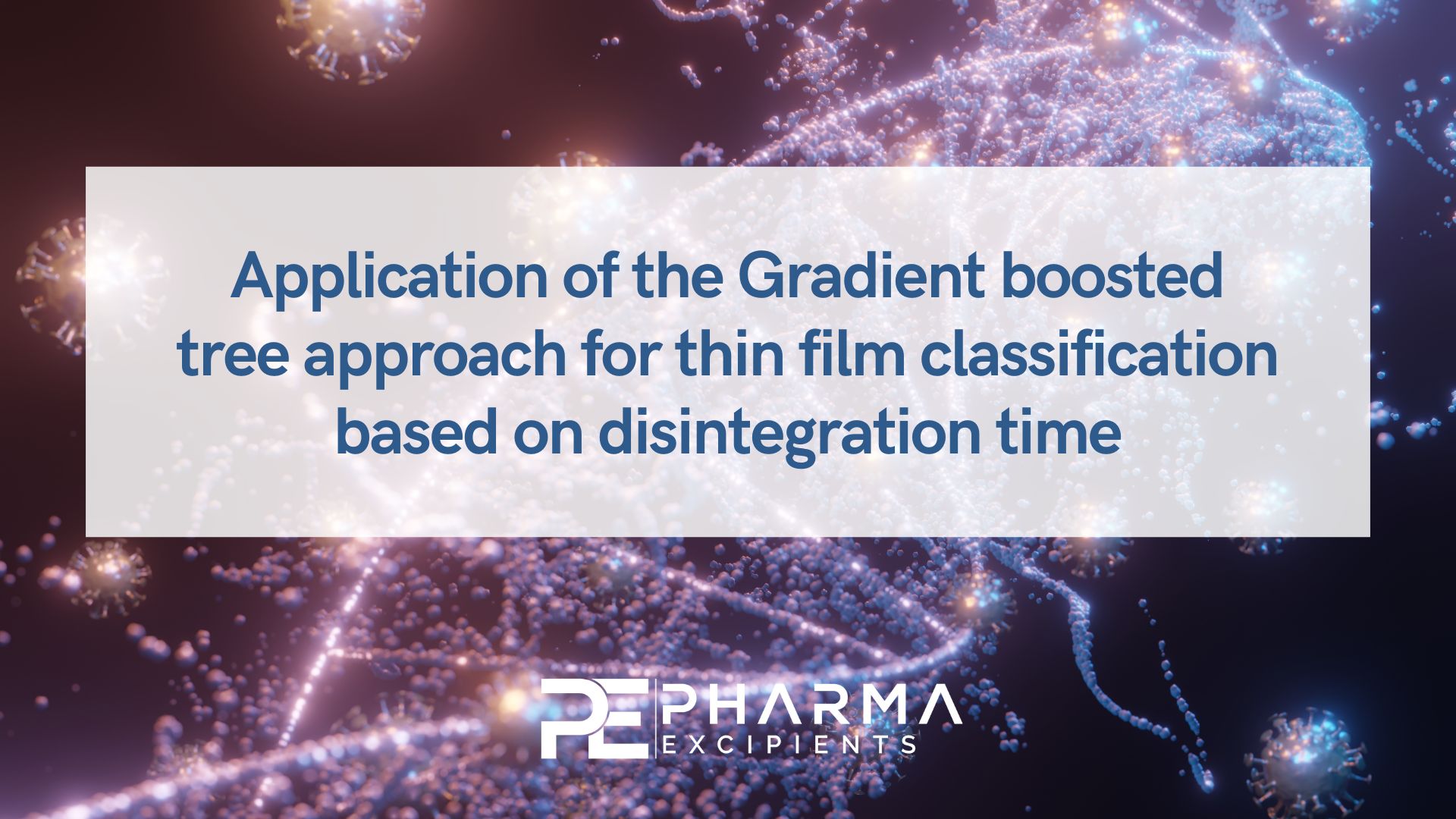Application of the Gradient boosted tree approach for thin film classification based on disintegration time

Introduction
Thin films are polymeric strips that disintegrate in the oral cavity and consist of a film-forming agent and an active pharmaceutical ingredient (API). Generally, thin films disintegrate within seconds, but their composition can be modified to allow slower disintegration and release of the loaded API, depending on the properties of the film.
Research into various aspects of oral thin films is progressing rapidly, but thin films are also being discussed in the context of a broader range of other dosage forms, such as carrier for multiparticulates or nano-based dosage forms and for the fixed-dose combinations (Turković et al., 2022). Large amounts of data are being generated over the years, so integrating machine learning algorithms can be beneficial to gain more in-depth knowledge about the thin film properties and interactions between film constituents. Gradient boosted tree is one of machine learning tools that
perform regression or classification by combining the outputs from individual decision trees. This work is aimed to explore the possibility of integrating a machine learning approach in evaluation of experimental data obtained by
films characterization. Potential application of Gradient boosted trees for thin films characterization based on their
disintegration properties as film critical quality attribute was investigated.
Materials and methods
Materials
Eight hydrophilic polymers were investigated as filmforming agents: (1) hydroxypropyl cellulose (Klucel® GF, Ashland™, USA), (2) hypromellose (Pharmacoat 606, Shin-Etsu Chemical Co., Japan); (3) carboxymethylcellulose sodium salt (Fluka Chemie AG, Switzerland), (4) polyethylene glycol–polyvinyl alcohol graft copolymer (Kollicoat® IR, BASF, Germany), (5) maltodextrin (Glucidex IT12, Roquette, France), (6) sodium alginate (Fisher Scientific, USA), (7, 8) poly(ethylene oxide) polymers (POLYOX™ WSR N10, PEO N80, POLYOX™ WSR N80, DuPont, U.S.). Glycerol (Gly), 85% (w/w) (Ph.Eur) was used as plasticizer, and magnesium aluminometasilicate (Neusilin UF, Fuji Chemical Industries Co, Japan), croscarmellose sodium (Primellose®, DFE Pharma, Germany), crospovidone (Polyplasdone™ XL-10, Ashland™, USA), sodium starch glycolate (SSG, Primojel®, DFE Pharma, Germany), calcium silicate (CaS, RxCIPIENTS® FM1000, Huber Engineered Materials, Havre de Grace, MD, USA) were used as disintegrants. Active pharmaceutical ingredients which were used are ibuprofen, paracetamol, caffeine, enalapril, verapamil, atenolol, carvedilol (Ph. Eur).
Download the full article as PDF here: Application of the Gradient boosted tree approach for thin film classification based on disintegration time
Erna Turković, Ivana Vasiljević, Jelena Parojčić, Application of the Gradient boosted tree approach for thin film
classification based on disintegration time, Macedonian pharmaceutical bulletin, 69 (Suppl 1) 113- 114 (2023), Online ISSN 1857 – 8969,
DOI: 10.33320/maced.pharm.bull.2023.69.03.055

